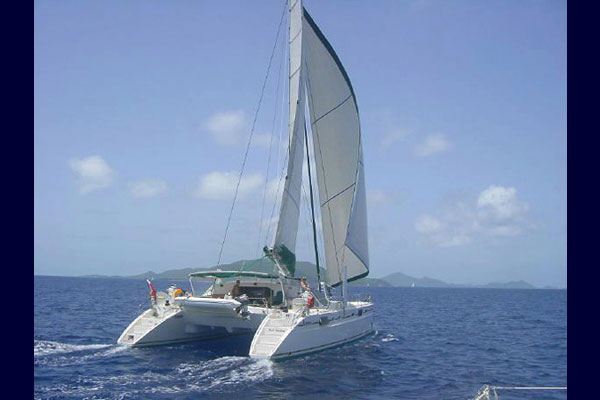Getting Coded for Charter
Owning your own catamaran gives you the freedom to pretty much do anything and go where you like without experience or qualifications. However when you have paying passengers or guests there is a range of responsibilities and legislation that applies and designed to promote safety.
Many of our clients for whom we have delivered their catamarans intend to operate their yachts on a commercial basis. To operate a large professional catamaran for skippered charters for commercial gain Owners and management companies will look to Maritime and Coastguard Agency (MCA) coding or similar.
When a boat is no longer deemed to be a ‘pleasure vessel’, Merchant Shipping Regulations state that it should comply with the certification, survey, safety and manning standards laid down in the Codes of Practice Small Vessels in Commercial Use for Sport or Pleasure, Workboats and Pilot boats under 24m (known as MGN 280).
The charter companies for whom we deliver their catamarans are fully aware of these regulations and meeting relevant standards for their areas of operations is part of their management programme. However there is an obvious cost to meeting these standards and some individual operators may be tempted to ignore the need to get certification or allow the coding to lapse.
We are frequently approached by Owners who wish to save costs and have paying crew to assist in the delivery of their yacht. However when asked if the vessel is MCA coded, they are unaware of this requirement or if they are, intend to ignore it. Unfortunately we know of some operators that regularly charge crew to deliver non coded boats.
When should a boat be ‘coded’?
If crew are asked to pay anything more than is considered a contribution to running costs it is deemed as a commercial operation and a licence is required i.e. the MCA (Maritime Coastguard Agency) Coding is required.
There are six MCA categories which are indicative of build quality, safety and yacht stability – and each category limits how far the boat can sail offshore.
Area Category 6 – To sea, within 3 miles from a nominated departure point(s) named in the certificate and never more than 3 miles from land, in favourable weather and daylight.
Area Category 5 –To sea, within 20 miles from a nominated departure point named in the certificate in favourable weather and daylight.
Area Category 4 – Up to 20 miles from a safe haven, in favourable weather and in daylight.
Area Category 3 – Up to 20 miles from a safe haven.
Area Category 2 – Up to 60 miles from a safe haven.
Area Category 1 – Up to 150 miles from a safe haven.
Area Category 0 – Unrestricted service.
A catamaran on delivery from France to Spain with paying crew on board which is coded to Category 2 will need to stay within 60 miles of the coast around the Bay of Biscay. A delivery with a professional captain and with volunteer crew is not considered operating commercially and could take a more direct route saving hundreds of miles.
If your dealer or management company is using a delivery service that charges the crew to deliver your catamaran and the vessel is not correctly coded, the captain faces prosecution, the insurance could be invalid and potentially the yacht is seized and not allowed to leave port. It is the responsibility of the Owner that the yacht is operated legally.
How to get coded?
Because we deal with the majority of the production catamarans, we have built up considerable experience of the models and what is required. Generally there will be a number of relatively small modifications required. This varies from vessel to vessel but on a typical production catamaran there is usually nothing too significant.
There is also a fairly standard but extensive list of safety equipment and other items which are required on board. You will probably find that you have much of the equipment on board already or will need it anyway. Part of our service is to provide a specific list of equipment required.
Our appointed Certifying Authority surveyor will arrange to inspect the boat using the SCV2 form. He will need to see the vessel out of the water and provide a list of work to be done. We then set about managing the work and adding the required equipment. Once the vessel is ready, the surveyor will complete his inspection using an SCV2 form.
We recognise document MGN280 is detailed and in places confusing. We will advise you and aim to complete the process with the minimum of fuss, delays and costs. Our service includes
- Liaising with the surveyor and completing necessary forms
- Managing and documenting the minimum work required for compliance
- Providing items and equipment required
Code compliance certificates are valid for five years. Annual, intermediate and renewal surveys are required to keep the vessel compliant. By and large, annual surveys often check the vessel against its paperwork; intermediate surveys are physical checks on the equipment and condition of the vessel, and renewals are a full inspection including out-of-water inspection.
This all may seem very daunting especially for the first time Owner. But you should not be put off making your catamaran safer and legal to charter. All the services provided by Reliance Yacht Management are to make yacht ownership easier and more enjoyable.
 Blue Moon is a beautiful Catana catamaran that we have delivered and that has gone onto to be a successful charter boat http://www.bluemooncruising.com/
Blue Moon is a beautiful Catana catamaran that we have delivered and that has gone onto to be a successful charter boat http://www.bluemooncruising.com/
Download MGN280 Download

